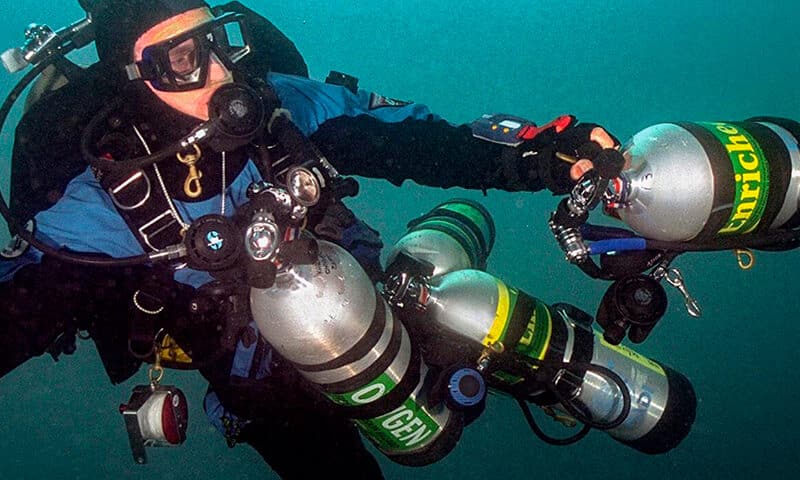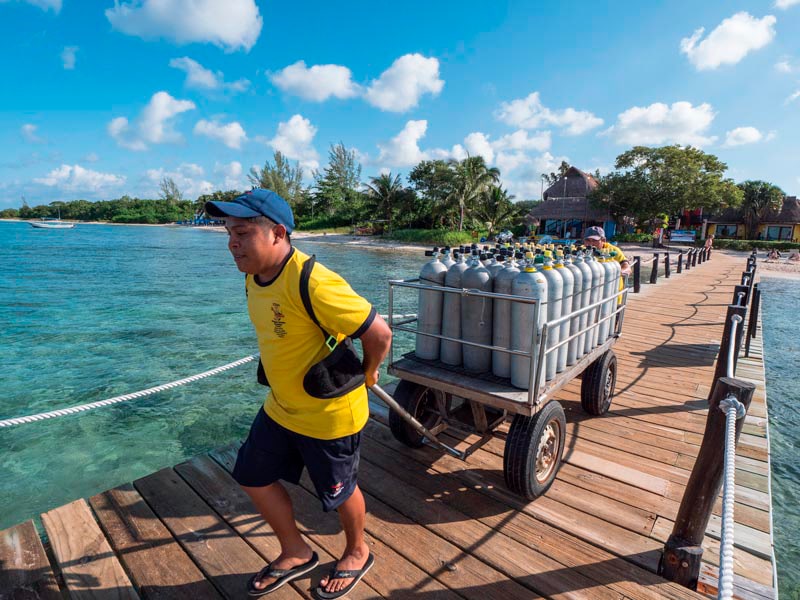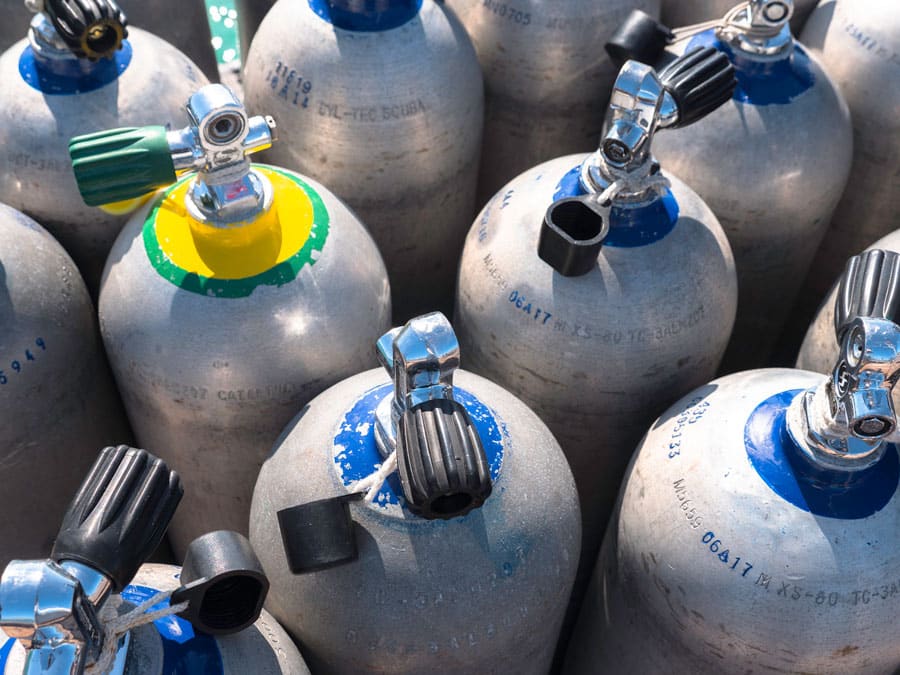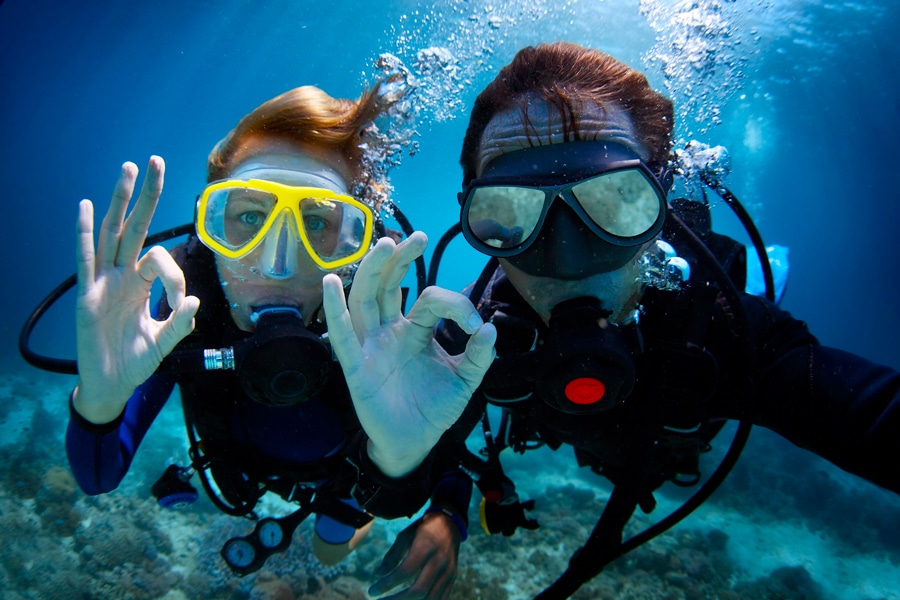1. Scuba Tank Definition
What is a diving cylinder?
Diving cylinders are those things that many non-divers call “oxygen canisters” and it gives scuba divers the creeps when we hear that name. These cylindrical tanks contain the air mixture that keeps us alive underwater, whether it’s regular compressed air, Nitrox, Trimix, or Heliox—all are pressurized into these cylinders. Of course, there are diving cylinders of various sizes. Let’s get to know them!
2. Scuba Tank Sizes and Pressures
2.1. Measurement Units of Scuba Tanks
It is important to note that the size of scuba diving cylinders is not as crucial in itself as their volume.
In Europe and South America, the volume of diving cylinders is measured in liters, while in the United States and Anglo-Saxon countries, it is measured in cubic feet.
The available volumes in the market range from small “pony” cylinders for emergencies, with capacities ranging from 6 to 40 cubic feet in North America and 1 to 4 liters in Europe, to the large main cylinders used by technical divers, reaching up to 150 cubic feet or 18 liters in Europe. However, determining if a scuba tank is full is not based on its capacity but rather on its pressure.
2.2. Scuba Tanks Working Pressures
Something similar happens with the pressures in scuba diving tanks. There are two measurements. For pressure, in North America, we use pounds per square inch or PSI, while in Europe, we refer to BARS.
No matter the scuba tank size, its working pressure is what will indicate its operability, and therefore, these measurements, although not directly related to the size of the scuba tanks, are crucial to consider their suitability for you.
There are high-pressure (HP) tanks with a capacity of 300 BARS/4,350 PSI and low-pressure tanks, and their size, both in inches and meters, will be directly related.








